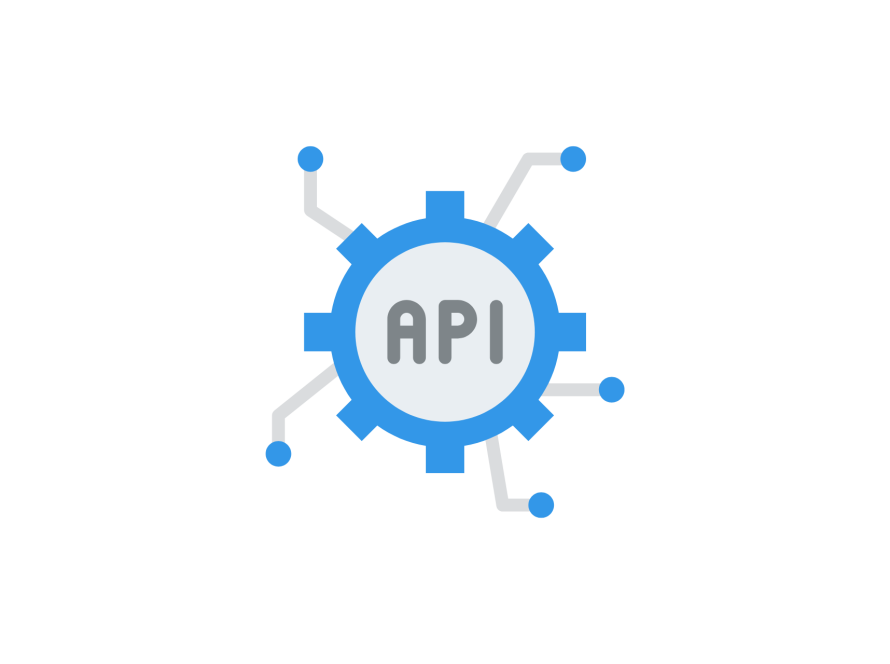AI Software development services
AI Integrated Solutions for Your Business
Welcome to TAF Solution, your trusted partner in crafting intelligent solutions for your business needs. We specialize in developing custom-made AI software that empowers your organization with cutting-edge technology. Our dedicated team of experts is here to transform your vision into reality.



what we do
OUR MAIN SERVICES
AI Based Chatbots
Machine Learning Applications
Natural Language Processing
Computer Vision Solutions
AI-Driven Automation
Predictive Analytics
OTHER SERVICES
Data Science
Website Development & Hosting
SEO Services
OUR PROCESS
We are very transparent about our services, we will tell you that what particular softwares or tools are being used to design and develop customised softwares in order to provide you the best AI solutions possible
AI Based Chatbots
The detailed process of development of an AI chat bot from requirement analysis, design conversation flow, natural language understanding, integration, testing and deployment is detailed below
Understand the client’s needs, the purpose of the chatbot, and its target audience.
Creation of a conversational flowchart to outline how the chatbot interacts with users.
Using NLP libraries and tools like spaCy, NLTK, or Dialogflow to enable the chatbot to understand user input.
Integration of the chatbot with the client’s website, messaging platforms (e.g., Facebook Messenger, WhatsApp), or other channels. Test the chatbot with real users, refine responses, and improve user experience.
Deploy the chatbot to the chosen platforms.
Tools Used for AI based Chatbots
Dialogflow – can be used to create chatbots, voicebots, and other conversational interfaces that can understand and respond to natural language.
Microsoft Bot Framework – includes a variety of tools and services to help you develop, test, deploy, and manage your bots.
IBM Watson Assistant – is a powerful AI chatbot tool that can help you automate customer service, improve employee productivity, and boost sales.
Rasa NLU – is used to build AI chatbots that can understand and respond to user queries in a natural way.
Scripting is a very common practice among Python programmers. It’s used for automation of daily tasks, reporting, server management, security, social media, etc.
Machine Learning Applications
The detailed process of development of Machine learning applications from data collection to data processing, to model selection and training, evaluation and deployment is detailed below
Gather and prepare the data needed for training machine learning models.
Transformation and cleaning, and preparation of the data for model training.
Selecting a suitable machine learning algorithm or framework based on the problem, e.g., scikit-learn, TensorFlow, or PyTorch.
Train the selected model with the help of prepared data.
Evaluation of the performance of the model through characteristics like accuracy, precision, recall, or F1-score. Integration of the trained model into the client’s system for real-time predictions.
Tools Used for Machine Learning Applications
Python is a popular programming language for data processing and modeling. It has a wide range of libraries and frameworks that make it well-suited for these tasks, such as NumPy, Pandas, and SciPy.
Jupyter Notebooks are a popular tool for experimentation in data science and machine learning. They allow you to combine code, text, and images in a single document, making it easy to track your progress and share your findings.
Scikit-learn, TensorFlow, and PyTorch are all popular machine learning frameworks in Python. Scikit-learn is a good choice for beginners and for projects that do not require a lot of customization.
Data visualization libraries are tools that help us to create and share graphical representations of data. They can be used to communicate insights from data in a clear and concise way. Some of the most popular data visualization libraries include Matplotlib, Seaborn, Plotly, and Bokeh.
Natural Language Processing
The detailed process of development of natural language processing based applications from text data collection to text pre-processing, feature extration and NLP model building, testing, tuning and deployment is detailed below
Gather and preprocess text data from various sources.
Clean and tokenize text, remove stopwords, and perform stemming/lemmatization.
Extract relevant features from text data, such as TF-IDF, word embeddings, or document vectors.
Develop NLP models using libraries like spaCy, NLTK, or Hugging Face Transformers.
Testing, Tuning and Deployment:: Evaluate model performance, fine-tune hyperparameters, and optimize for specific tasks. Deploy the NLP model for text analysis and processing.
Tools Used for Natural Language Processing
SpaCy, which is a free and open-source library for Python. spaCy can be used for a variety of tasks, such as part-of-speech tagging, named entity recognition, and dependency parsing. It is also known for its speed and accuracy.
NLTK is a popular NLP toolkit for Python. It provides a wide range of features for text processing, including tokenization, stemming, tagging, parsing, and classification. NLTK is a valuable resource for anyone interested in learning about NLP or developing NLP applications.
Hugging Face Transformers is a popular NLP library that provides pre-trained models for a variety of tasks. This means that you can use the library to solve a wide range of problems without having to train your own models from scratch.
Gensim is a Python library for natural language processing tasks, such as topic modeling and document similarity. It is known for its efficiency and scalability, making it a popular choice for large-scale NLP projects. Furthermore, it is also relatively easy to use, making it a good choice for beginners.
Python is a popular programming language for NLP. It is easy to learn and use, and there are many NLP libraries available for Python.
Computer Vision Solutions
The detailed process of development of computer vision solutions from data collection, data augmentation, model selection, model training, testing and validation and integration is detailed below
Gather and preprocess image and video data.
Enhance the dataset with techniques like rotation, flipping, or color adjustments.
Choosing a computer vision framework such as OpenCV, TensorFlow, or PyTorch.
Training the computer vision model for object detection, image classification, or other tasks.
Evaluation of the models accuracy and performance using test datasets. Integration of the computer vision model into the client’s application or system.
Tools Used for Computer Vision Solutions
OpenCV is an open-source computer vision library that is widely used for a variety of tasks, including image processing, object detection, and face recognition. It is a powerful tool that can be used to solve a wide range of computer vision problems.
TensorFlow is an open-source machine learning framework that can be used for a variety of tasks, including computer vision. It provides a number of computer vision (CV) and image classification tools, such as KerasCV, tf.image, and TensorFlow Datasets.
PyTorch is an open-source machine learning library used for developing and training neural network-based deep learning models. It is a popular choice for computer vision tasks because it allows developers to easily build and train deep learning models using a variety of powerful tools and libraries.
ImageNet is a large dataset of images with corresponding labels, which is commonly used to train and evaluate computer vision models.
Python is a versatile programming language that is well-suited for scripting in Computer Vision Solutions Tools.
AI Driven Automation
The detailed process of development of a various AI driven automated solutions including process analysis, data integration, algorithm development, testing and validation, deployment, monitoring and maintenance is detailed below
Identify repetitive tasks and workflows suitable for automation.
Connect to relevant data sources and APIs for input.
Develop automation scripts or workflows using AI algorithms.
Test the automation process for accuracy and reliability.
Deploy the automation solution into the client’s systems. Continuously monitor and maintain the automation to ensure its efficiency.
Tools Used for AI driven Automation
Python is a powerful language that is often used for scripting and automation. It is also a popular choice for AI-driven automation tools, as it is easy to learn and use, and has a large community of developers.
Both UiPath and Automation Anywhere are powerful tools that can help businesses automate tasks and improve their efficiency. The best tool for a particular business will depend on the specific needs of the business.
By automating the process of data integration, AI-driven automation tools can help organizations to improve the efficiency, accuracy, and scalability of their data integration operations. This can lead to a number of benefits, such as improved decision-making, reduced costs, and increased agility.
Predictive Analysis
The detailed process of development of predictive analysis based business solutions from data gathering, data pre-processing, feature engineering, model selection, model training and deployment is detailed below
Collect historical data relevant to the predictive problem.
Clean, transform, and prepare the data for analysis.
Create meaningful features and select relevant variables.
Choose predictive analytics algorithms (e.g., regression, time series forecasting, or classification).
Train and validate predictive models. After that deploy predictive models for real-time decision-making.
Tools Used for Predictive Analysis
Python is a popular programming language that is often used for data analysis and predictive analytics. It has a number of features that make it well-suited for these tasks.
Scikit-learn is a powerful tool for predictive analysis. It is easy to use, efficient, and has a wide range of features. If you are looking for a machine learning library for Python, scikit-learn is a great option.
Pandas is a powerful open-source Python library for data manipulation and analysis. It is commonly used in predictive analysis to prepare data for machine learning models. Pandas provides a variety of functions for cleaning, transforming, and analyzing data, making it a valuable tool for data scientists and analysts.
Jupyter Notebooks are a popular tool for data analysis and visualization. They provide a way to combine code, text, and images in a single document, which makes it easy to share and collaborate on projects. Jupyter Notebooks can also be used to create predictive models, by using a variety of machine learning algorithms.
Data Science
The detailed process of development of various data analysis based solutions include data gathering and pre-processing, feature engineering, and exploratory data analysis, model selection, training and deployment, documentation and reporting, maintenance and monitoring and feedback loops is detailed below
Gather data from various sources and prepare it for analysis by addressing missing values and outliers.
Visualize and analyze data to uncover patterns, relationships, and insights
Develop predictive models or statistical analyses and assess their performance.
Interpret findings and present them effectively through reports and visualizations.
Continuously refine models and analyses based on feedback and new data.
Tools Used for Data Science Applications
Python is a popular programming language for data science, and Pandas is a powerful library for data manipulation and analysis. Pandas can be used to clean data in a variety of ways.
Matplotlib and Seaborn are two Python libraries that are commonly used for data visualization. Matplotlib is a more general-purpose library that can be used to create a wide variety of plots, while Seaborn is a more specialized library that is designed for statistical data visualization.
Jupyter Notebook is an open-source web application that allows you to create and share documents that contain live code, equations, visualizations, and narrative text. It is a popular tool among data scientists because it provides a way to interactively explore and analyze data, as well as to create reproducible reports.
Scikit-learn is a free and open-source machine learning library for Python. It is one of the most popular data science tools in Python, and is used by data scientists and machine learning engineers all over the world.
TensorFlow and PyTorch are two of the most popular open-source machine learning frameworks used by data scientists. Both frameworks are designed to make it easier for developers to create and train machine learning models. However, there are some key differences between the two frameworks.
R and SQL are often used together in data science projects. R can be used to perform statistical analysis on data extracted from a database using SQL. SQL can also be used to load data into R for further analysis.
Tableau and Power BI are both powerful data visualization tools that can be used by data scientists to explore and analyze data. Tableau is known for its ease of use and interactive dashboards, while Power BI is more tightly integrated with Microsoft products. Both tools can be used to create a wide variety of visualizations, including charts, graphs, maps, and dashboards.
Markdown is a lightweight markup language that is often used in data science to create documentation, reports, and presentations. It is easy to learn and use, and it can be used to create documents that are both readable and reproducible. Markdown documents can be converted to a variety of formats, including HTML, PDF, and Word, making them easy to share with others.
We are catering to the need of the world through our AI hub in the United States of America. We strive to provide the best services to our clients whether it’s customised AI bots, or machine learning-based solutions, our data analyst will provide you best available AI solutions that suits your business needs.
Our Global Reach
AI and data scientists hired from all around the world
One stop Hub that caters the needs of the World
Our Portfolio
Feel the Power of AI by Using Our Products
AI bots
Customised for your Buisines Needs
- Customise to Perform Repetitive tasks
- Interact to execute your queries
- Dealing with your clients 24/7 on your website
- All in one solution to derive the best out of your Business
Machine Learning Software
A Powerful Learning Agent for your Business
- Machine learning software can provide you powerful business insights
- Your business can learn from mistakes and it can outperform your competitors
- CRM softwares, Predictive analysis softwares for marketing
Best Services for Less
Our AI software development services are developed through cutting edge technologies and they are sold in flexible prices so that you can afford best AI solutions within your own budget.
- Flexible Prices
- Cutting Edge solutions
- Powered with AI
Ai SOFTWARE
Our top services include customised AI softwares, machine learning models for your business, and Data analysis-based solutions. Other frequently ordered services and software include; React native mobile applications, web-based solutions, and other software based on Python programming language.


























